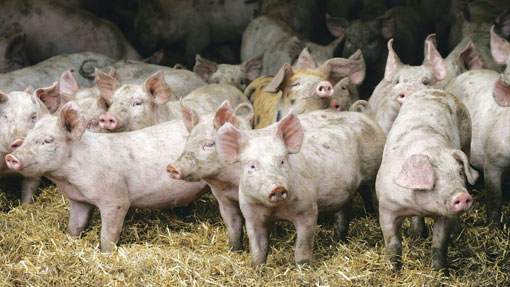February top tips for livestock farmers

1. Assess your pastures
Now is the time to start assessing fields pre-turnout. According to EBLEX’s Liz Genever the target sward heights for early spring are four centimetres for sheep and five to six centimetres for cattle when set stocking.
“For ewes with lambs, if the grass is below four centimetres, supplementary feeding is needed as they will find it difficult to eat enough to cope with the demands of early lactation,” she says.
“Consider using fertiliser to boost spring grass, but keep the focus on south-facing, well-drained fields with good levels of productive grasses to get the highest return on investment.”
2. Analyse lambing records
Maximising the number of lambs reared is essential to the success of any sheep enterprise, but many producers do not know where their losses are occurring.
A recent project suggests there are typically losses of 10 to 25% between scanning ewes and the sale of their lambs, explains EBLEX’s Katie Brian.
“The first step towards reducing losses is to analyse farm records and compare them with previous years or national benchmarks.
“There are five key measures to look at: numbers of ewes tupped, number of lambs scanned, lambing percentage, lambs turned out and rearing percentage.”
3. Monitor winter ventilation
Air quality and temperature have a big impact on pig comfort, health and growth and, in winter, advance preparation for changing weather is particularly important.
Stephen Winfield, BPEX knowledge transfer manager, says producers should keep an eye on the local weather forecast and adjust ventilation settings accordingly.
To help maintain good growth rates in finisher accommodation, the sides of tents and sheds should be closed and the roof vents opened, where possible, to keep airflow going.
4. Check and plan parity structure
Pig producers should check parity structure and gilt/boar requirements for the year ahead, says Angela Cliff, BPEX knowledge transfer manager. “Review farrowing rates for services last year and plan accordingly.”
5. Plan to maximise milk from forage
We are now at the beginning of the forage season – a very important time of year for planning to maximise milk from forage, irrespective of the system operated.
Quality forage is the basis to all systems and delivers good returns on investments, but it does need planning, according to DairyCo extension officer, Piers Badnell.
“There’s a time window now to find out the pH, P and K status and a chance to take a look at soil structure. Without these being correct, output, palatability and quality of forage grown, together with the effectiveness of inputs, like fertiliser, are compromised.”
6. Body condition score
Spring-calving herds, are being advised to keep a close eye on body condition change in the period before and after calving. DairyCo extension officer Tom Goatman, says farmers should aim to calve cows down at a body condition score of 2.5-3 and ensure cows lose no more than 0.5 body condition from calving to the start of breeding.
What should be on your list of things to do this month? The livestock levy bodies, EBLEX, BPEX and DairyCo have put together some timely topics for consideration
Keep up to date with the latest livestock news
Watch “how to” videos at www.fwi.co.uk/howtovideos
